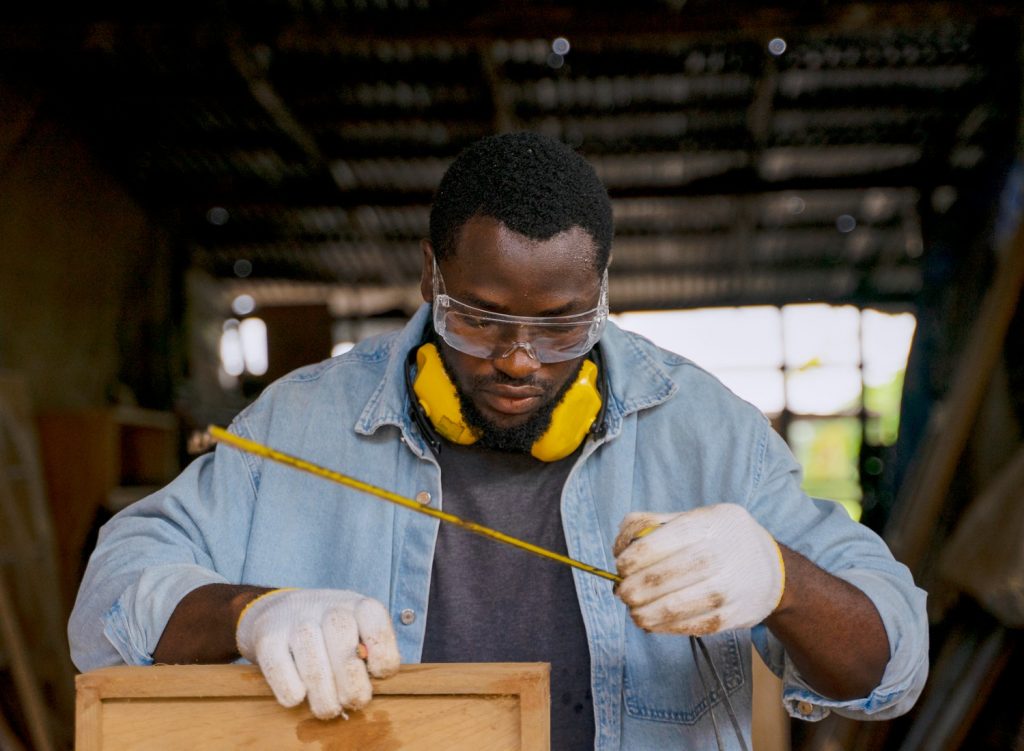What Is the Black Diamond on a Tape Measure? Tips and Tricks for More Accurate Readings

The tape measure undoubtedly is a humble yet essential tool in every DIY enthusiast’s tool kit, no matter what skill level. It also harbors a useful mark that often goes unnoticed: the black diamond. If you’ve ever wondered about its significance and how it can enhance the accuracy of your measurements, you’re in the right place.
In this guide, we delve into learning about tape measures, uncovering the purpose behind the black diamond, and offering tips and tricks to ensure more precise readings. Elevate your measuring skills and tackle projects with newfound precision and confidence.
Understanding the Black Diamond
The black diamond on a tape measure isn’t just a random design element—it serves a crucial purpose. Positioned at regular intervals along the tape, this black diamond indicates the truss layout for standard 16-inch spacing commonly used in construction. By aligning the diamond with a truss or stud, you can quickly and easily identify the appropriate spacing for your measurements, streamline the process, and ensure that your projects adhere to industry standards.
There are some common misconceptions surrounding the black diamond. One is that it indicates the halfway point between the 16-inch and 24-inch markings. However, this is not the case. The black diamond specifically represents the 19.2-inch spacing, which is not related to the 24-inch mark. Another misconception is that it’s only relevant for professional builders and carpenters. While it is commonly used in construction, anyone can benefit from understanding and using the black diamond for accurate measurements.
Utilizing the Diamond for Layouts
When working on projects that involve framing, such as installing studs or trusses, the black diamond becomes an invaluable tool for precise layouts. Instead of measuring each interval individually, simply align the black diamond with the starting point, and every subsequent diamond corresponds to 16-inch spacing. This not only expedites the layout process but also minimizes the margin for error, ensuring that your framing components are accurately spaced and aligned.
Tips for Improved Accuracy
To maximize the accuracy of your tape measure readings, try these few handy tips. Ensure that the tape is taut when measuring. Use the hook at the end of the tape for inside measurements and butt it against the surface for outside measurements. When measuring longer distances, enlist the help of a second person to ensure the tape remains level and straight. By incorporating these techniques into your measuring routine, you’ll enhance the precision of your readings.
Overcoming Common Measurement Mistakes
In the quest for accuracy, it’s essential to address common measurement mistakes that can compromise the integrity of your projects. Steer clear of “eyeballing” measurements. Always use the tape measure for precise readings and be mindful of parallax errors. Ensure that the tape is parallel to the surface you’re measuring to avoid skewed results. Regularly check and replace worn-out tapes, as damaged or stretched tapes can lead to inaccurate measurements. By adopting these preventative measures, you’ll minimize errors and produce results that meet professional standards.
Mastering Additional Features
Beyond the black diamond, tape measures often come equipped with additional features that can further enhance accuracy. Look for a tape measure with clear and easy-to-read markings, ensuring that you interpret the measurements correctly. Some tapes include both imperial and metric scales, providing versatility for different projects. Consider a tape with a locking mechanism to secure the tape in place during measurements. Exploring and mastering these additional features expands the utility of your tape measure.
Conclusion
Unveiling the mystery of the black diamond on a tape measure reveals not only its significance in construction but also its potential to elevate the precision of your measurements. By understanding and utilizing this symbol, along with adopting best practices and mastering additional features, you empower yourself to tackle DIY projects with newfound accuracy. Say goodbye to measurement uncertainties as you incorporate these tips and tricks into your toolkit.
